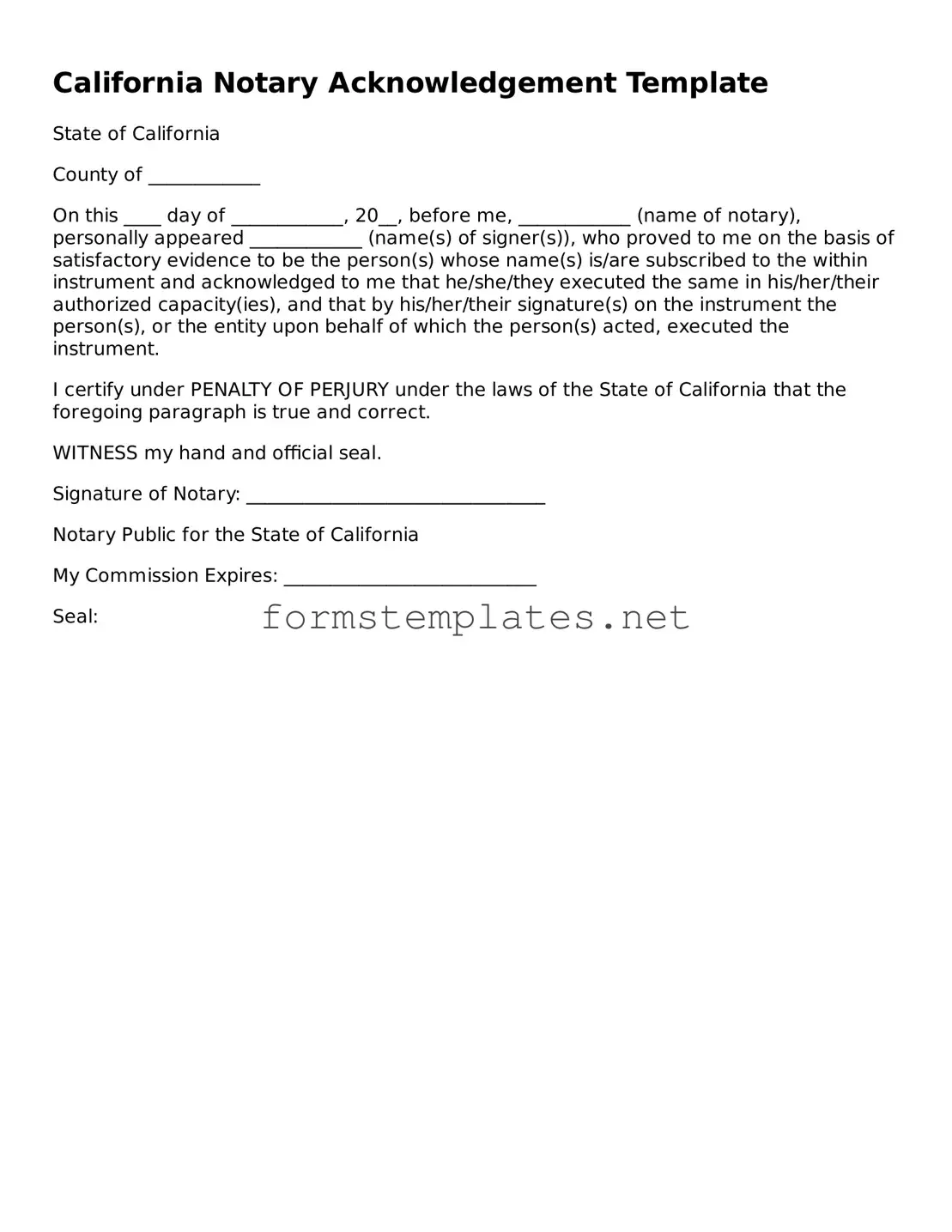Attorney-Approved California Notary Acknowledgement Template
The California Notary Acknowledgement form is a legal document that serves to confirm the identity of a signer and their willingness to sign a particular document. This form plays a crucial role in various transactions, ensuring that signatures are authentic and legally binding. Understanding its purpose and requirements can greatly enhance the effectiveness of document execution in California.
Open Editor Now
